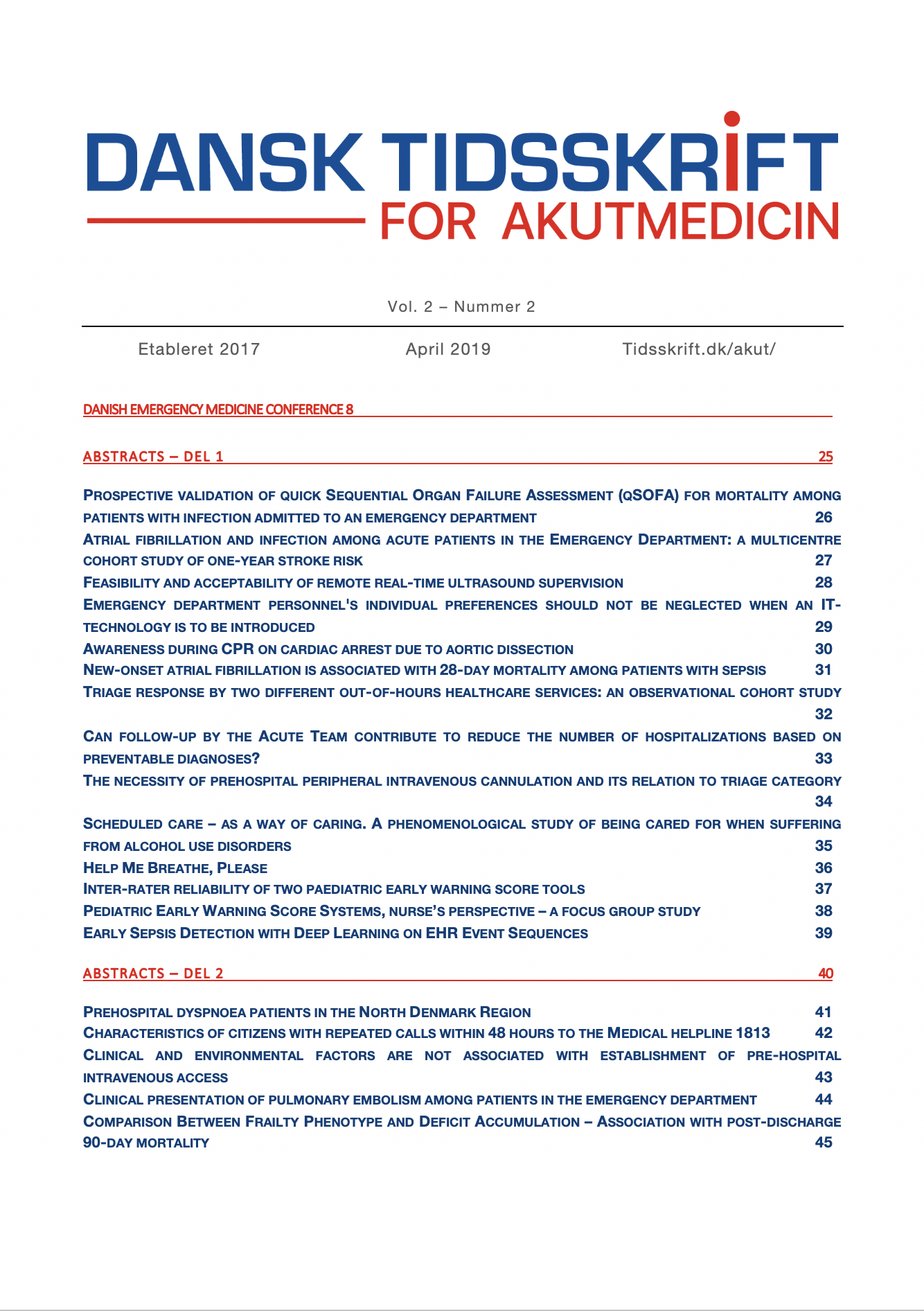Abstract
Background: Sepsis is a clinical condition involving an extreme inflammatory response to an infection, and is associated with high morbidity and mortality. Without intervention, this response can progress to septic shock, organ failure and death. Every hour that treatment is delayed mortality increases. Early identification of sepsis is therefore important for a positive outcome.
Methods: We constructed predictive models for sepsis detection and performed a register-based cohort study on patients from four Danish municipalities. We used event-sequences of raw electronic health record (EHR) data from 2013 to 2017, where each event consists of three elements: a timestamp, an event category (e.g. medication code), and a value. In total, we consider 25.622 positive (SIRS criteria) sequences and 25.622 negative sequences with a total of 112 million events distributed across 64 different hospital units. The number of potential predictor variables in raw EHR data easily exceeds 10.000 and can be challenging for predictive modeling due to this large volume of sparse, heterogeneous events. Traditional approaches have dealt with this complexity by curating a limited number of variables of importance; a labor-intensive process that may discard a vast majority of information. In contrast, we consider a deep learning system constructed as a combination of a convolutional neural network (CNN) and long short-term memory (LSTM) network. Importantly, our system learns representations of the key factors and interactions from the raw event sequence data itself.
Results: Our model predicts sepsis with an AUROC score of 0.8678, at 11 hours before actual treatment was started, outperforming all currently deployed approaches. At other prediction times, the model yields following AUROC scores. 15 min: 0.9058, 3 hours: 0.8803, 24 hours: 0.8073.
Conclusion: We have presented a novel approach for early detection of sepsis that has more true positives and fewer false negatives than existing alarm systems without introducing domain knowledge into the model. Importantly, the model does not require changes in the daily workflow of healthcare professionals at hospitals, as the model is based on data that is routinely captured in the EHR. This also enables real-time prediction, as healthcare professionals enters the raw events in the EHR.
Licensed under a Creative Commons Attribution 4.0 International License (CC BY 4.0).
© The Author(s).

